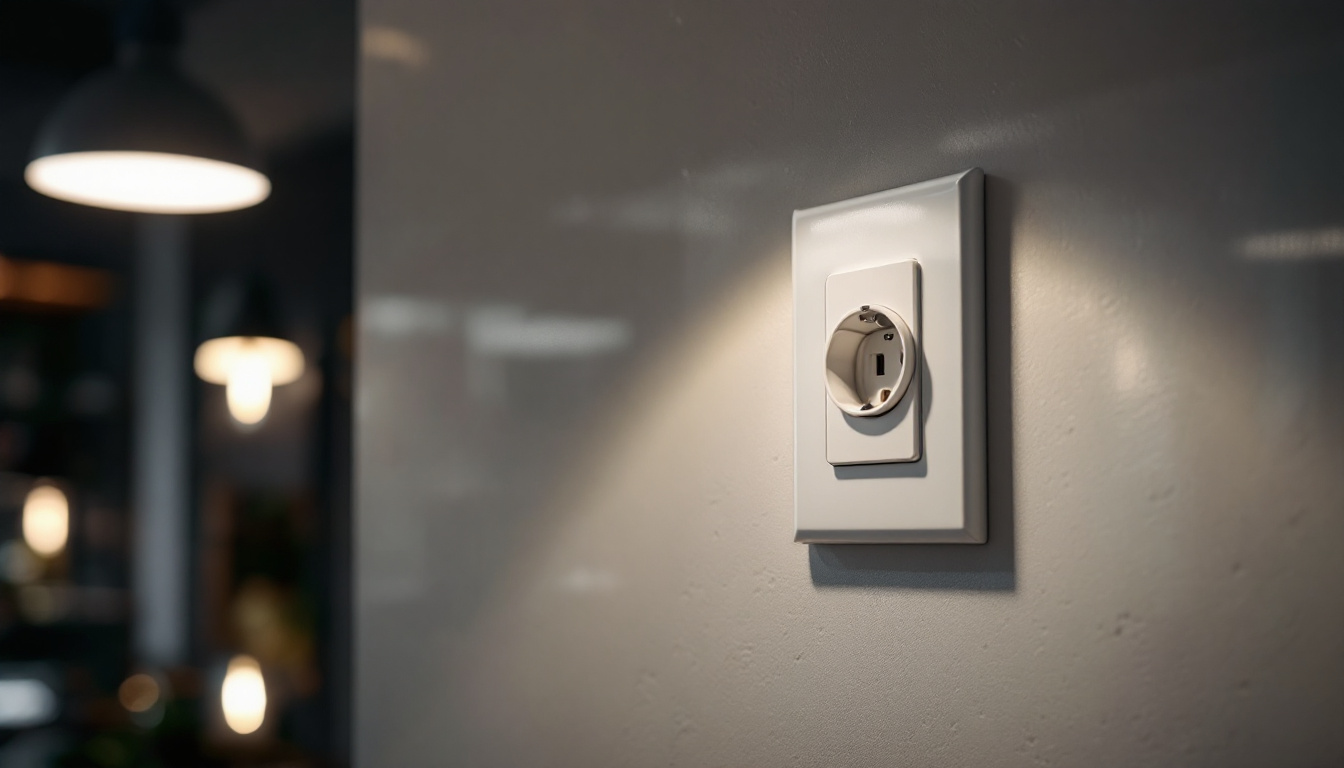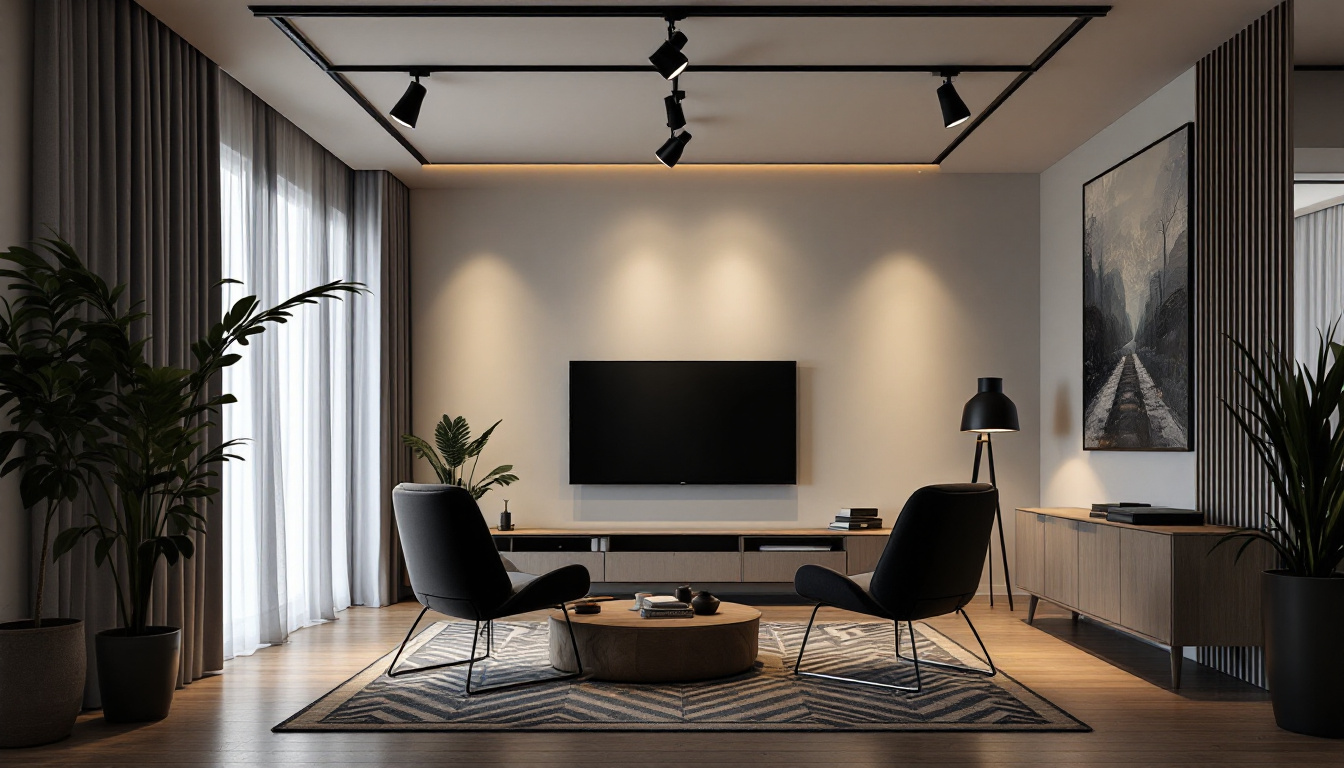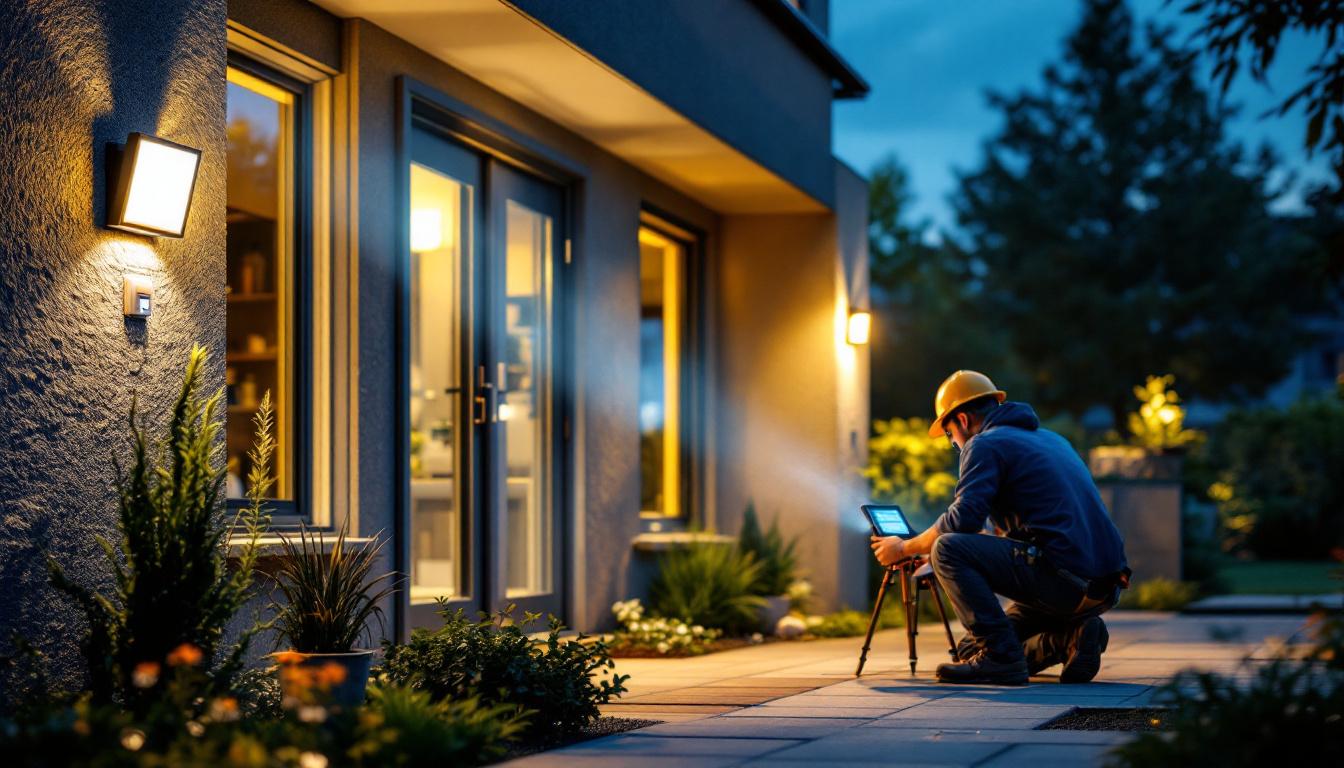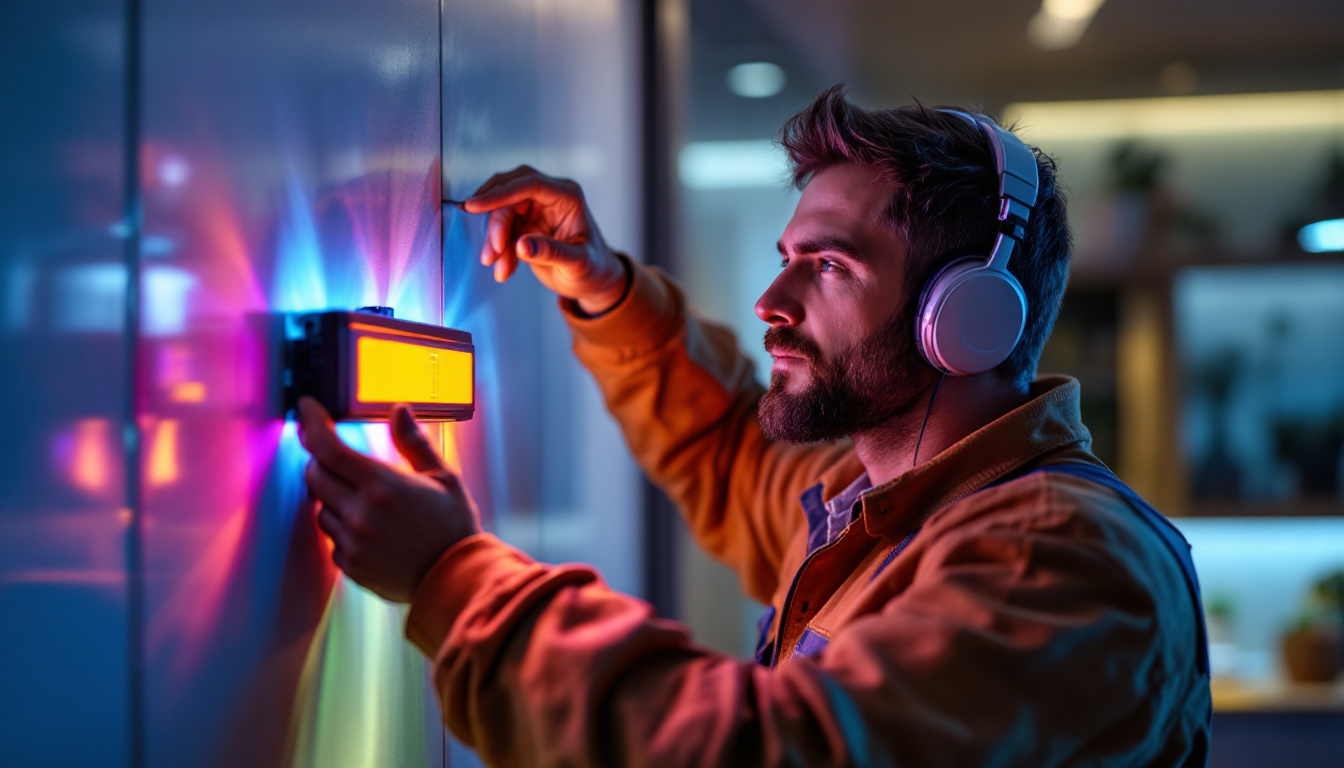
As the demand for energy efficiency and sustainable practices continues to grow, lighting contractors are increasingly turning to innovative solutions like daylight sensors. These devices not only enhance the functionality of lighting systems but also contribute to significant energy savings. Understanding how to effectively implement and optimize daylight sensors can set contractors apart in a competitive market. This article provides essential tips and insights for lighting professionals looking to master the use of daylight sensors.
Daylight sensors, also known as daylight harvesting sensors, are devices that detect the level of natural light in a given environment. They adjust artificial lighting based on the amount of available daylight, ensuring that spaces are adequately lit while minimizing energy consumption. This technology is particularly useful in commercial buildings, where large windows and open spaces can lead to fluctuating light levels throughout the day. By optimizing the use of natural light, these sensors not only enhance the aesthetic appeal of a space but also contribute to a more sustainable approach to energy consumption.
These sensors typically operate using photodiodes or phototransistors, which measure the intensity of light and communicate with the lighting control system. The integration of daylight sensors into lighting designs not only enhances energy efficiency but also improves the overall comfort and productivity of occupants. Moreover, as smart building technologies continue to evolve, many daylight sensors can now be integrated with building management systems, allowing for advanced monitoring and control of lighting and HVAC systems, further enhancing energy performance.
There are several types of daylight sensors available, each suited for different applications. The most common types include:
Incorporating daylight sensors into lighting systems offers numerous advantages. First and foremost, they lead to significant energy savings by reducing the reliance on artificial lighting during daylight hours. This not only lowers electricity bills but also contributes to a reduced carbon footprint. The financial benefits can be substantial, particularly for large facilities where lighting constitutes a significant portion of energy costs.
Additionally, daylight sensors enhance occupant comfort by maintaining consistent lighting levels. Studies have shown that well-lit environments can improve productivity and well-being, making daylight sensors a valuable addition to any lighting design. Furthermore, many building codes and green building certifications encourage or require the use of daylight harvesting technologies, making them an essential consideration for contractors. The use of daylight sensors can also enhance a building’s marketability, as more tenants and buyers are seeking sustainable and energy-efficient spaces. As awareness of environmental issues grows, the demand for buildings that incorporate such technologies is likely to increase, further solidifying the role of daylight sensors in modern architecture and design.
Successfully implementing daylight sensors requires careful planning and execution. Here are some best practices for lighting contractors to follow during installation:
Before installation, conduct a thorough site assessment to determine the optimal placement of daylight sensors. Consider factors such as window orientation, obstructions, and the layout of the space. Understanding how natural light enters the building will help in positioning sensors for maximum effectiveness.
Additionally, consider the types of fixtures and controls that will be integrated with the sensors. Compatibility is crucial for ensuring seamless operation and achieving the desired lighting outcomes. It’s also beneficial to take into account the seasonal variations in sunlight, as the angle and intensity of natural light can change throughout the year. This foresight can aid in selecting sensors that are adaptable to these fluctuations, ensuring consistent performance regardless of the season.
Once the sensors are installed, proper calibration is essential. Adjust the sensitivity settings to match the specific lighting needs of the space. Testing the system under different lighting conditions will help fine-tune the performance of the sensors, ensuring they respond appropriately to changes in natural light.
It’s also important to educate clients on how to use and maintain the sensors. Providing clear instructions on adjusting settings and troubleshooting common issues can enhance client satisfaction and ensure optimal performance over time. Consider offering a follow-up service or maintenance check after a few months of operation, as this can help identify any adjustments needed based on the client’s experience and the evolving lighting conditions within the space.
Integrating daylight sensors with smart lighting systems can further enhance their effectiveness. Smart systems can provide advanced features such as remote monitoring, scheduling, and automated adjustments based on occupancy and daylight levels.
When selecting smart lighting systems, ensure compatibility with the chosen daylight sensors. This will allow for a cohesive and efficient lighting solution that meets the needs of both the contractor and the client. Furthermore, consider the potential for data analytics in smart systems, which can provide insights into energy usage patterns and help in making informed decisions for future upgrades or modifications. By leveraging these analytics, contractors can offer clients tailored solutions that not only improve energy efficiency but also enhance the overall user experience in the space.
While daylight sensors offer numerous benefits, they can also present challenges during installation and operation. Here are some common issues and potential solutions:
One of the most common challenges with daylight sensors is false readings caused by obstructions or reflective surfaces. For instance, furniture, curtains, or even the layout of the room can interfere with the sensor’s ability to accurately measure light levels.
To mitigate this issue, conduct a thorough assessment of the space before installation. Ensure that the sensor is placed in an unobstructed location and consider using sensors with adjustable sensitivity settings to account for varying conditions.
Inconsistent performance can occur if the sensors are not calibrated correctly or if they are exposed to extreme environmental conditions. For example, sensors placed near heating vents or air conditioning units may be affected by temperature fluctuations.
Regular maintenance and recalibration are essential to ensure optimal performance. Encourage clients to schedule periodic checks to adjust settings and clean the sensors, which can help maintain their effectiveness over time.
Many clients may not fully understand how daylight sensors work or the benefits they offer. Providing comprehensive education during the installation process can help alleviate concerns and enhance their overall experience.
Consider offering training sessions or informational materials that explain the functionality of the sensors, their benefits, and how to troubleshoot common issues. Empowering clients with knowledge will foster trust and satisfaction, leading to potential referrals and repeat business.
The field of daylight sensing technology is continuously evolving, with new advancements enhancing the capabilities of these devices. Staying informed about emerging trends can help lighting contractors remain competitive and offer cutting-edge solutions to clients.
The Internet of Things (IoT) is transforming the way lighting systems operate. Future daylight sensors are expected to leverage IoT technology to provide enhanced connectivity and data analytics. This integration will allow for real-time monitoring and adjustments based on occupancy patterns and environmental changes.
Contractors should consider how IoT-enabled daylight sensors can be integrated into their lighting designs. This will not only improve energy efficiency but also provide valuable insights into usage patterns, helping clients make informed decisions about their lighting systems.
Adaptive lighting systems that respond to both daylight levels and occupancy are gaining traction. These systems can adjust lighting not only based on natural light but also on the presence of people in a space, further optimizing energy usage.
Contractors should explore the potential of integrating adaptive lighting solutions with daylight sensors. This combination can lead to more sophisticated lighting designs that maximize energy savings while enhancing occupant comfort.
As technology continues to advance, the accuracy and sensitivity of daylight sensors are likely to improve. New materials and designs may lead to more compact and efficient sensors that can be easily integrated into various lighting fixtures.
Contractors should stay abreast of the latest developments in sensor technology. By incorporating cutting-edge solutions into their projects, they can offer clients the most effective and innovative lighting systems available.
Mastering the use of daylight sensors is essential for lighting contractors looking to enhance their offerings and meet the growing demand for energy-efficient solutions. By understanding the technology, following best practices for installation, addressing common challenges, and staying informed about future trends, contractors can position themselves as leaders in the field.
Ultimately, the integration of daylight sensors not only benefits clients through energy savings and improved comfort but also contributes to a more sustainable future. As the industry continues to evolve, embracing innovative technologies will be key to success in the competitive landscape of lighting design and installation.
Ready to take your lighting projects to the next level with the latest daylight sensor technology? At LumenWholesale, we provide lighting contractors like you with the highest quality, spec-grade lighting products at unbeatable wholesale prices. Say goodbye to local distributor markups and hello to superior lighting solutions that meet the highest industry standards. With our hassle-free bulk buying and free shipping, you can equip your projects with premium lighting at the best value — all without hidden fees or compromises. Elevate your lighting designs today and experience the perfect blend of quality, affordability, and convenience. Visit LumenWholesale for Wholesale Lighting at the Best Value.

Discover how commercial grade outlets can enhance your lighting installation projects by offering superior durability, safety, and efficiency.

Discover the essential insights every lighting contractor should know about track lighting.

Discover the ultimate guide for lighting contractors on mastering LED flood lights with motion sensors.

Discover the essential guide for lighting professionals with the “Dimmale Constant Current LED Driver: The Ultimate Lighting Contractor Checklist.” Learn how to optimize installations, enhance energy efficiency, and ensure seamless performance in your lighting projects.